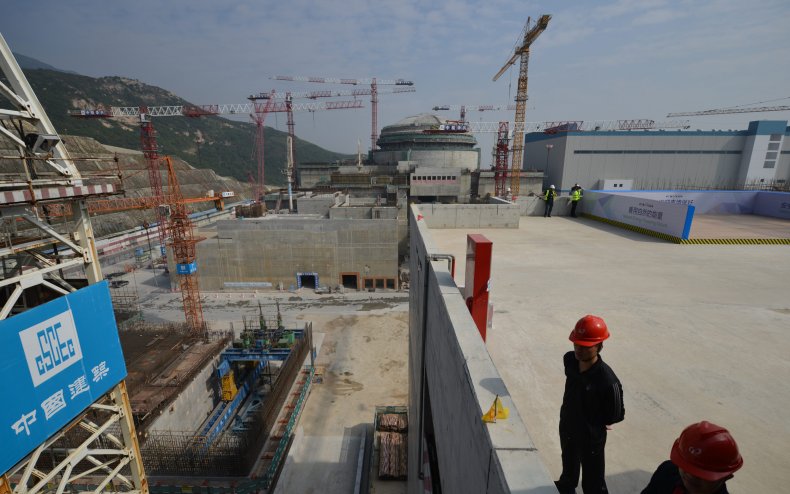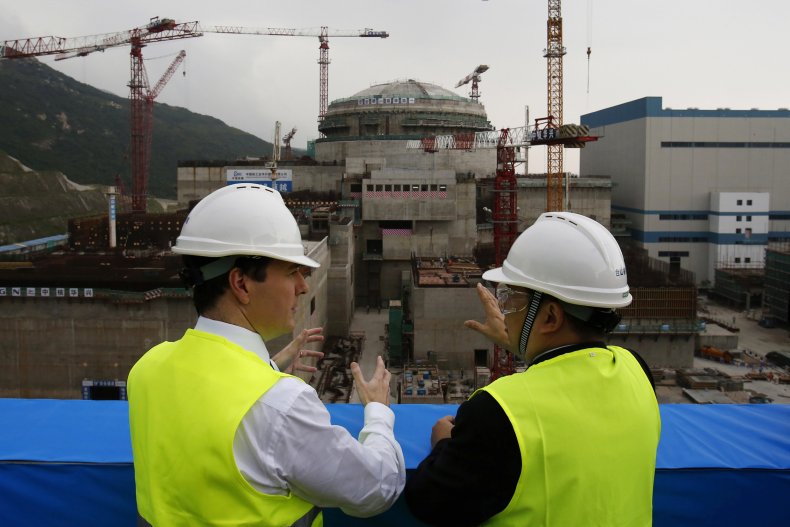China Nuclear Plant Radiation Increased But Still Within 'Allowable Range,' Country Says
Radiation at China's Taishan Nuclear Power Plant increased but is within an "allowable range," the nation's Ministry of Ecology and Environment announced Wednesday, the Associated Press reported.
China's government confirmed that five fuel rods broke inside the Guangdong province power plant's No. 1 reactor where radiation levels rose. The ministry rejected CNN's report that the facility's regulators heightened radiation levels permitted outside of the power plant to prevent a shutdown.
"There is no problem of radioactive leakage to the environment," the ministry said in a statement and noted that the power plant's reactor had five damaged fuel rods out of 60,000.
The United Nations' International Atomic Energy Agency (IAEA) on Wednesday echoed the China Atomic Energy Authority's (CAEA) report of "no environmental concern" due to the reactor.
For more reporting from the Associated Press, see below.

Radiation was contained by barriers that functioned as planned, the ministry said on its social media account.
The Hong Kong government said it was watching the plant and asking officials in Guangdong for details after its French co-owner on Monday reported increased "noble gases" in the reactor. Experts said that suggested fuel rods broke and leaked radioactive gas produced during nuclear fission.
Noble gases such as xenon and krypton are byproducts of fission along with particles of cesium, strontium and other radioactive elements.
The ministry's statement said radiation in the reactor coolant increased but was within the "allowable range."
The protective envelope on about five of the reactor's fuel rods is damaged, the ministry said. It said such damage was inevitable due to manufacturing and other problems and was well below the level the facility was designed to cope with.
The ministry said regulators would oversee measures to control radiation levels within the reactor but gave no details.
The Taishan plant, which began commercial operation in December 2018, is owned by China Guangdong Nuclear Power Group and Electricite de France. A second reactor began operating in September 2019.
They are the first of a new type called European Pressurized Reactors designed by Framatome, of which Electricite de France is the majority owner. Two more are being built in Finland and France.
The ministry said regulators reviewed a report about higher radiation levels in the reactor following CNN's report.
The IAEA said Wednesday the CAEA reported the reactor's "containment integrity is maintained."
China is one of the biggest users of nuclear power and is building more reactors at a time when few other governments plan new facilities because the cost of solar, wind and other alternatives is plunging.
Chinese leaders see nuclear power as a way to reduce air pollution and demand for imports of oil and gas, which they deem a security risk.
China has 50 operable reactors and is building 18 more, according to the World Nuclear Association, an industry group. China has constructed reactors based on French, U.S., Russian and Canadian technology. State-owned companies also have developed their own reactor, the Hualong One, and are marketing it abroad.
Hong Kong gets as much as one-third of its power from the Daya Bay nuclear power plant east of the territory in Guangdong. Plans call for Hong Kong to use more mainland nuclear power to allow the closure of coal-fired power plants.
Previously, the Taishan facility leaked a "small amount" of radioactive gas on April 9, the National Nuclear Safety Administration said on its website. It said the event was "Level 0," or "without safety significance."


